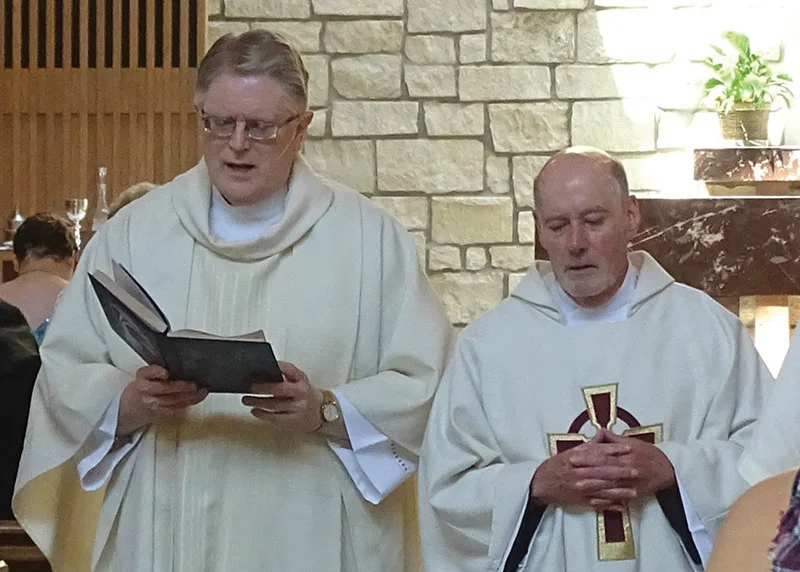
Carmelite Fathers David McEvoy, left, and David Simpson, sing the recessional hymn as they process out of the church after Mass on June 11 at Immaculate Conception Church in Leavenworth. LEAVEN PHOTO BY KATIE PETERSON
by Katie Peterson
Special to The Leaven
LEAVENWORTH — “For even when we were with you,” St. Paul said in the Second Letter to the Thessalonians, “we gave you this rule: ‘The one who is unwilling to work shall not eat’” (3:10).
This passage is part of the rule of the Carmelite order given by St. Albert of Jerusalem after the religious order was founded on Mount Carmel in the Holy Land at the time of the Crusades.
“It’s the idea of how we live our life and what is our gift to the church,” said Father Tom Schrader, O.Carm., president of Bishop Ward High School in Kansas City, Kansas.
The Carmelites have been a part of the Archdiocese of Kansas City in Kansas since 1864 when two Carmelite friars arrived from Straubing, Bavaria, and asked permission of Bishop John Baptiste Miege to settle there. With the bishop’s approval, the first foundation of the Carmelite Order in the United States was established in Leavenworth.
Today, there are five Carmelites in the archdiocese living in Leavenworth and Scipio and working at various assignments: Father David McEvoy, pastor of Immaculate Conception-St. Joseph Church in Leavenworth; Brother David McGinnis, pastoral associate of Immaculate Conception-St. Joseph; Father Jerry Williams, pastor of St. Boniface Church in Scipio and St. Therese Church in Richmond; Father David Simpson, in residence at St. Boniface Parish in Scipio; and Father Tom.
“Being a Carmelite is a way of life, a spirituality, growing in relationship with God as a community of brothers,” said Brother David.
A deep devotion to the Blessed Mother prompted the choice to become a Carmelite for many of them.
“The best thing is knowing that I belong to a religious brotherhood dedicated to Mary,” said Father David McEvoy.
The name of the province that comprises the Leavenworth priory, in fact, is called the Province of the Most Pure Heart of Mary, and includes the United States, Canada, Mexico, El Salvador, Central America and Peru. A member from any of these places can be assigned to work anywhere in the province.
Carmelite priests and Brothers are different from diocesan priests in many respects.
“Priests who belong to a religious community are committed to the [community’s] order (or rule), obedient to its superiors and assigned wherever the order needs them,” Father David Simpson said.
“In a diocese, priests are governed by a bishop appointed by the pope, who does not have a limited term. Priests normally are restricted to working in the diocese from which they were ordained,” said Brother David.
All religious communities have similar vows they live by, such as obedience and celibacy. However, unlike diocesan priests, Carmelites also live by a vow of poverty.
“Poverty is a great invitation to freedom — setting aside the human urge for wealth, power and prestige and relying on the providence of God to provide all that I really need,” said Father Jerry.
It is the vow of poverty that classifies Carmelites as mendicants.
“Mendicants really means beggars, so we’re dependent upon people supporting us,” Father Tom explained.
As stated earlier, the diocesan priesthood is limited geographically. Usually diocesan priests minister in the diocese for which they were ordained, whereas any Carmelite from the Province of the Most Pure Heart of Mary can be assigned to any priory from Canada to Peru.
The emphasis on community structures the daily lives of religious order priests in ways different than that of diocesan priests. This includes the responsibility of the Carmelites to participate in daily prayer, meals and recreation together.
“Community is the heart of religious life,” said Father David McEvoy. “We throw our lot in together as disciples of Christ living our particular charism in the church.
“That effort to live in community is a sign for the rest of the church and the world that community is possible.”
Father Tom compared community life to St. Teresa of Avila’s metaphor of the uncut diamond.
“Within the context of a community,” he said, “you’re made like an uncut diamond. Each time you cut it, it becomes more like a cut diamond instead of a rough diamond.”
“You’re on this journey with a group of brothers that you can share it with,” he continued, “and help you grow spiritually and emotionally, too.”
Father Jerry said community life helps the Carmelites serve God’s people.
“There is very little clericalism in our community, and I believe that is a direct result of this structure,” he said. “How that affects our ministry comes down to an attitude that is based on the call we all receive in baptism.
“We don’t minister ‘to’ people — we try our very best to minister ‘with’ people.”
Carmelites are also expected to pray in a specific way.
“We’re expected to have a certain amount . . . contemplative prayer in the course of the day,” said Father Tom. The practice encourages “a really deep transformative relationship with Christ.”
“It’s like being quiet and listening to how the Lord speaks to you,” he added.
Although community life has its distinctions, in other ways the Carmelites consider themselves no different than any of Christ’s followers.
“We are normal persons on the journey, supporting one another as we proclaim God’s kingdom among us,” Father David Simpson said.
It is a family, Brother David said simply.
“We are a family with a variety of ministry opportunities,” he added, “and strive to assist people to have a deeper prayer experience and closer relationship with God.”

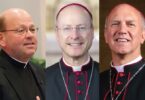

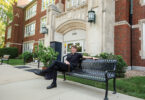

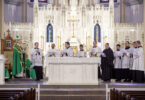
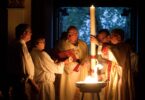
To whom it may concern,
My name is Fr. Stephen Arabadjis. I am a member of the Society of St. Pius X. But I am in my 7th year of Sabbatical.
Therefore I was hoping your group could do a 54 day rosary novena for my intentions. But any prayers and sacrifices would be greatly appreciated. I know Our Lady will reward you generously for this.
In Our Lady,
Fr. Arabadjis
P.S. Thanking you in advance, since I don’t always get all my communications.